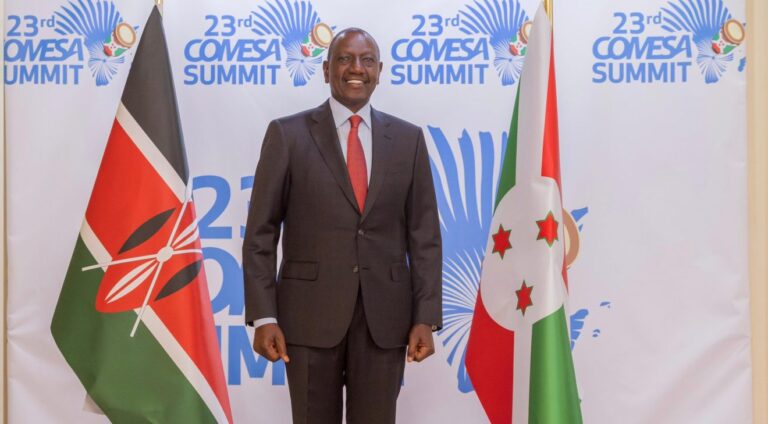
Rex Maasai (Left) and his shotting scene (Right). Photo/Courtesy
By Newsflash Repoter
NAIROBI, Kenya – The inquest into the death of 29-year-old protester Rex Masai took a dramatic turn Monday when a senior firearms examiner revealed that the fatal bullet fragment did not match any of the pistols submitted by police for testing, indicating it came from a live rifle round. The testimony directly contradicts previous police accounts that no live ammunition was fired during the maandamano protests where Masai was killed.
Testifying before Nairobi court, Senior Superintendent Alex Mdindi Mwandawiro of the Directorate of Criminal Investigations (DCI) headquarters stated that the damaged bullet jacket handed over by the Independent Policing Oversight Authority (IPOA) on July 1, 2024, was part of a rifle cartridge weighing 0.38 grams.
Critical Evidence Mismatch
Mwandawiro delivered crucial testimony that challenged the official police narrative. “The fragment bore right-hand twist engravings and a large engraved area, but its core was missing,” he told the court, explaining that the exhibit was consistent with rifles such as the Russian AK-47, the Israeli Galil, or Kenya’s locally produced Chalbi rifle.
The firearms expert explicitly ruled out the pistols submitted from DCI Central Police Station, stating they were of a different caliber and could not have discharged the fatal shot that killed Masai during the 2024 protests. This revelation raises serious questions about the weapons used by police during the demonstrations and the transparency of the investigation.
Read More: Senators question ODPP over withdrawal of county graft cases
Missing Weapons and Inconclusive Findings
In a startling disclosure, Mwandawiro revealed that he had been supplied with three pistols for analysis—but one was missing from the evidence presented. Even more significantly, he admitted under cross-examination that his findings were inconclusive since none of the firearms capable of firing the bullet had actually been presented for testing.
“The bullet did not pass through the pistols we received. My duty was simply to examine the exhibits submitted,” he stated, highlighting limitations in the investigation process that prevented definitive conclusions about the weapon used.
Contradiction of Official Account
The most damaging aspect of Mwandawiro’s testimony came when he confirmed that the bullet fragment recovered by IPOA must have originated from a live round. This directly contradicts earlier police testimonies that only rubber bullets were used during the protests where Masai was fatally shot.
“My examination revealed that the damaged jacket was part of a rifled bullet, not rubber,” Mwandawiro testified before trial magistrate Geoffrey Onsarigo, using technical firearms terminology that left no doubt about the nature of the ammunition used.
The testimony represents a significant development in a case that has become symbolic of police conduct during protest situations in Kenya. Human rights organizations have repeatedly raised concerns about excessive force during demonstrations, and Masai’s death has become a focal point for these concerns.
Read More: Suspects in lawyer Mbobu’s murder had a meeting with him before his death
Investigation Implications
The revelations raise serious questions about evidence handling in the case, particularly regarding the missing pistol and the failure to test appropriate rifles that could have fired the fatal shot. The testimony suggests either significant investigative failures or possible obstruction in determining the truth about Masai’s death.
As the inquest continues, the court must grapple with these discrepancies and determine how a live rifle round came to be fired during protests where police claimed only less-lethal ammunition was deployed. The case has broader implications for police accountability and transparency in Kenya.
The Rex Masai inquest continues amid growing public interest and calls for justice from human rights organizations and the victim’s family, who have sought answers about the circumstances surrounding his death during the 2024 demonstrations.



